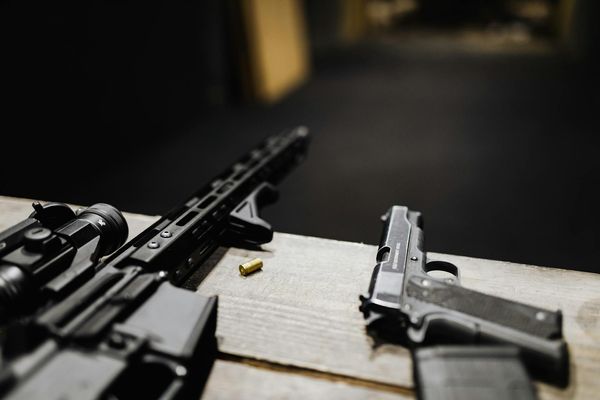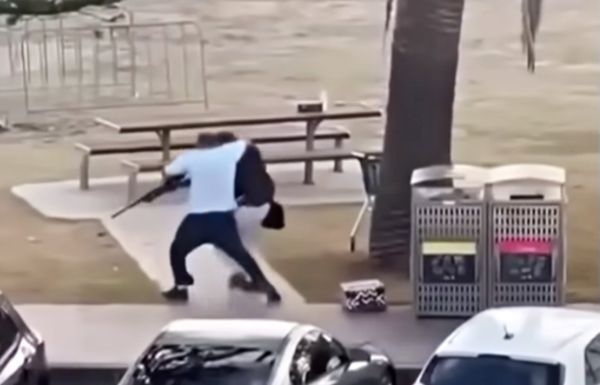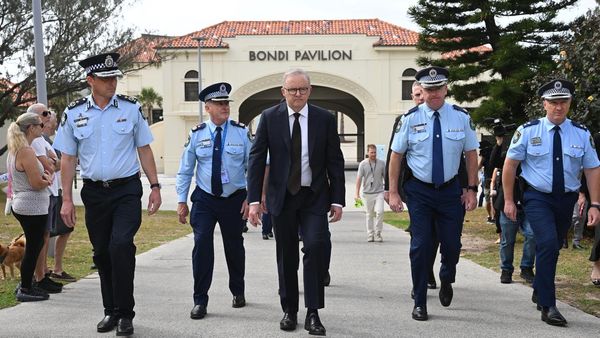Liverpool is home to one of the oldest UK teams playing a Gaelic game often described as a cross between football, rugby and basketball.
Almost every village in Ireland, even those with only 200 residents, has a Gaelic Athletic Association (GAA) pitch, with thriving teams and supporters fiercely loyal to their local club. Players going head to head for rival Gaelic football teams since they could first kick a ball, later come together to compete for county teams in the All-Ireland Senior Football Championship.
Formed in 1904, John Mitchels Liverpool is the only GAA club outside of Ireland to reach a Championship final, losing the 2009 juniors title to County Kerry's Skellig Rangers. But despite the reputation of Liverpool's Irish connection, the city only has two clubs, while Manchester has seven, Birmingham has six, and London has 30.
READ MORE: Victory of Lionesses changed face of women's football forever
The season runs from April to October, with the women's team playing matches every week until the start of a summer break. Members of the team were practicing in a pitch at Greenbank Park one evening this week. Fran Lynch, a 26-year-old from Tyrone, said: "Oh my god, I don't know who I'd be if I didn't play Gaelic football.
"It does encourage your culture. From a childhood perspective, you're playing it with everyone you've grown up with and been raised with in primary school, so it is a proper family and community. And over here, it's what's keeping you connected and close with your home roots."
Her teammate Aoife Murray, 26, grew up in a "GAA mad" family in Mayo before becoming a physiotherapist at Royal Liverpool Hospital two and a half years ago. She joined John Mitchels as a way of meeting people as soon as she moved, telling the ECHO: "The whole community over here is kind of centred around it. There are two teams in Liverpool, and even the Irish pubs over here, it's all GAA focused. I don't know what we'd do over here if we didn't have GAA."
Fran added: "You'd definitely get homesick, wouldn't you? But even it's nice that some of the girls, their parents are Irish, but they're actually born and raised in Liverpool. So for them, it's their connection to their home and they meet people from the same place as their father and mother."
Up the far end of the pitch, members of the men's team were practicing after a rival team pulled out of a scheduled match. The club's legacy hangs over them after five years with no win, but they're currently training twice a week in the hopes of changing that this year.

Kaylán Jackson-McCabe, 21, is originally from Cavan and moved to Liverpool as a kid. The civil engineer said: "I grew up watching Mitchels and watching the great teams. I always wanted to play for them. You know that you're in one of the biggest clubs in England, you know what's expected of you."
Primary school teacher Tom Mooney, 23, said: "You've got boys whose dad's played and managers are always telling us how successful Mitchels are, and we've yet to win anything. We want to do it ourselves. We know what we want to achieve and it's about now, in the next couple of weeks, what we want to put in to get there."
He's part of a contingent who originally arrived as Liverpool Hope University students, which makes up most of the team. The club introduced him to "40 Irish boys and 40 Irish girls" as an 18-year-old who knew nobody, and it's the pints at the weekend, as well as training and matches, that keeps Tom here.
Rival Liverpool club, Wolfe Tones, also draws on the student population. In a match against the club last week, Tom was up against a team including five guys he went to school with in Derry. John Mitchels' secretary, Cathal Harkin, who himself came from Derry for a PGCE ten years ago, credits students with helping to rebuild the club after a lull in the 1990s.
With "the two best teams of all universities in Britain - John Moores and Hope", Liverpool is blessed "to have the best of the best" players. But relying on the transient student population leaves John Mitchels with a high turnover of players who go home in the summer and move on when they graduate. Like many Irish students in Liverpool, Fran kept playing with her home team during summer holidays, joining John Mitchels when she started work as an orthoptist.
Cathal, 38, said: "You can't blame them. They go here for university and they may run out of money and they usually go home to their mammies and daddies, and maybe a summer job back home. You'll find some of the good players will get flown back over to play for their club."
The team also has a youth club, with 60 members, mostly the kids of Irish parents. With too few youth GAA teams in the North West to have regular matches, they're struggling to compete with kids' interest in other sports like rugby and soccer.
Despite the challenges, Cathal doesn't waver, seeing the GAA as "a movement rather than games" and describing Gaelic football as as much as part of his culture as language or music. He said: "Believe it or not, I've taken more pride in promoting my culture and Gaelic games over here than I even did back in Ireland."
Cathal's work with the GAA is more about culture and identity than it is about work. He told the ECHO: "We see it as passing on our love to other people. We were brought onto it and we got so much out of it, so now we're just passing it on."
READ NEXT







